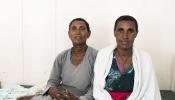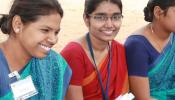The story of Tsultrim Dorje
by Dolma Chugi, Seva Tibet Staff
“I asked the doctors to take my eyes out and exchange them with Tsultrim’s many times, but they kept telling me that such a medical technology wasn’t invented,” confessed Tsultrim’s grandmother. She would gladly have given her precious sight to her grandson and spared his parents, his aunt and herself the many tears they have cried in the past three years. She is pictured here on the far right with Tsultrim and his aunt. Worrying about his eye health has aged her beyond her 68 years.
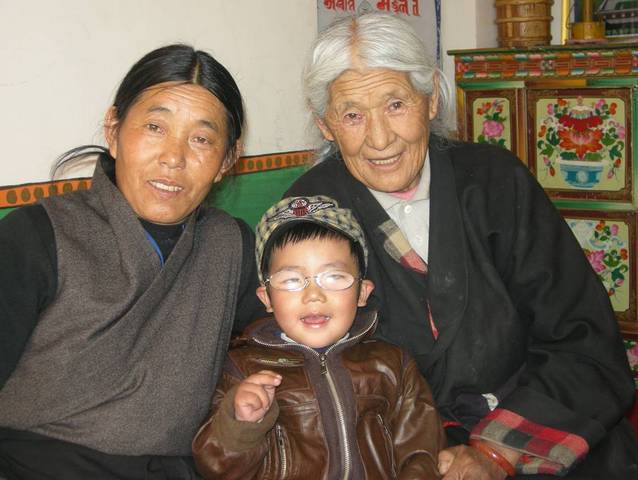
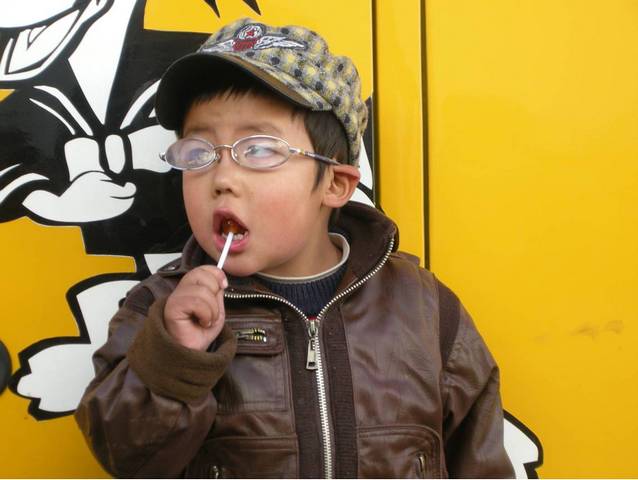
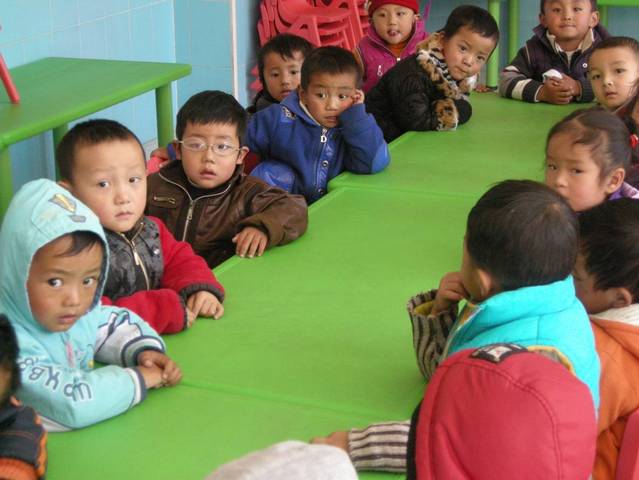

Tsultrim Dorje with aunt and grandmother
Tsultrim lives mostly with his grandmother and his aunt because his parents work long hours. They only have time to be with him occasionally on weekends and during their holidays. His mother works as a bathroom cleaner at a hotel and his father is a porter. Together they earn only US $192 a month and that has to feed and support Tsultrim, his grandmother, his aunt and themselves. For three years, Tsultrim’s father lived with the nightmare that Tsultrim’s blindness wouldn’t be treated and that he wouldn’t be able to go to school like all the other children. He shared his fears with me and, after rolling his eyes for a few seconds, he said “You know, nowadays, no schooling means no academic degree, and no degree means no life!” His voice trembling, he continued, “Tsultrim is my only child. The devastation of his life is the tragedy of my life!”
Tsultrim Dorje after his cataract sugery wearing his aphakic glasses
Tsultrim had his first surgery on one eye when he was only four months old. Ever since, he has been terrified of hospitals and doctors. His most recent surgeries were performed by Dr. Judy Newman, a pediatric ophthalmologist and volunteer from the USA. Dr. Newman has been a pioneer of pediatric eye programs for Seva in Tibet. She remembers Tsultrim very well because he cried the loudest and hardest throughout every visit, from registration all the way through examination, vision-checking, eye drops and surgery. He even cried during follow-up visits. Cataract management for children is more complicated than for adults and, as a result, Tsultrim has already undergone three surgeries. Intraocular lens implants are not recommended until the age of nine when ophthalmic nerves are better developed. Now, at last, after all the crying and struggles, his sight has been restored and he can wear aphakic glasses – glasses that work to replace the eye’s natural lens. He can behave like a normal child! One sunny Sunday morning three months after Tsultrim’s surgery, I was strolling in the Naga Park behind the Potala Palace and unexpectedly met Tsultrim and his aunt. Tsultrim was running energetically around the pathways. His aunt was thrilled to tell me that Tsultrim had been admitted to kindergarten in the fall. Tsultrim never stopped running around during our whole conversation.
Tsultrim Dorje wearing his special aphakic glasses at school in Tibet
On Tuesday, I visited Tsultrim in his kindergarten. It was almost lunch time. All the kids had just packed up their text books and cleared their desks to get ready for lunch. They would eat together and then nap together in a dorm. Tsultrim, however, was waiting for his aunt to pick him up and take him home for his lunch and nap. I felt sorry he couldn't stay with his classmates but his aunt explained that tuition at kindergarten costs US $176 each year and is double if Tsultrim stays at school for his lunch and nap. This extra cost would be a huge burden to the family because of their meager income. Nevertheless, being able to go to school and get an education - just like all the other children - counts more than anything else to Tsultrim and his family!